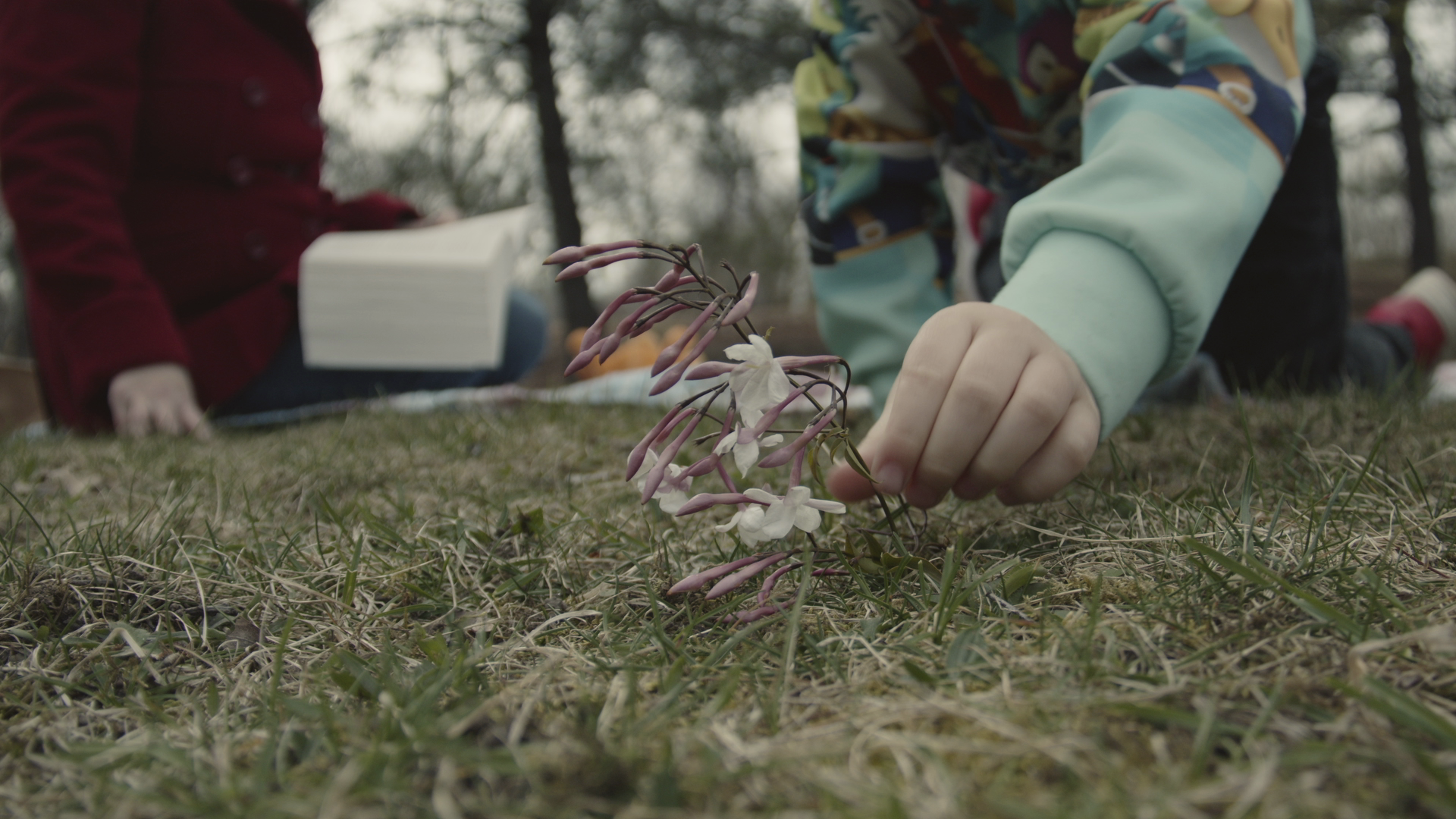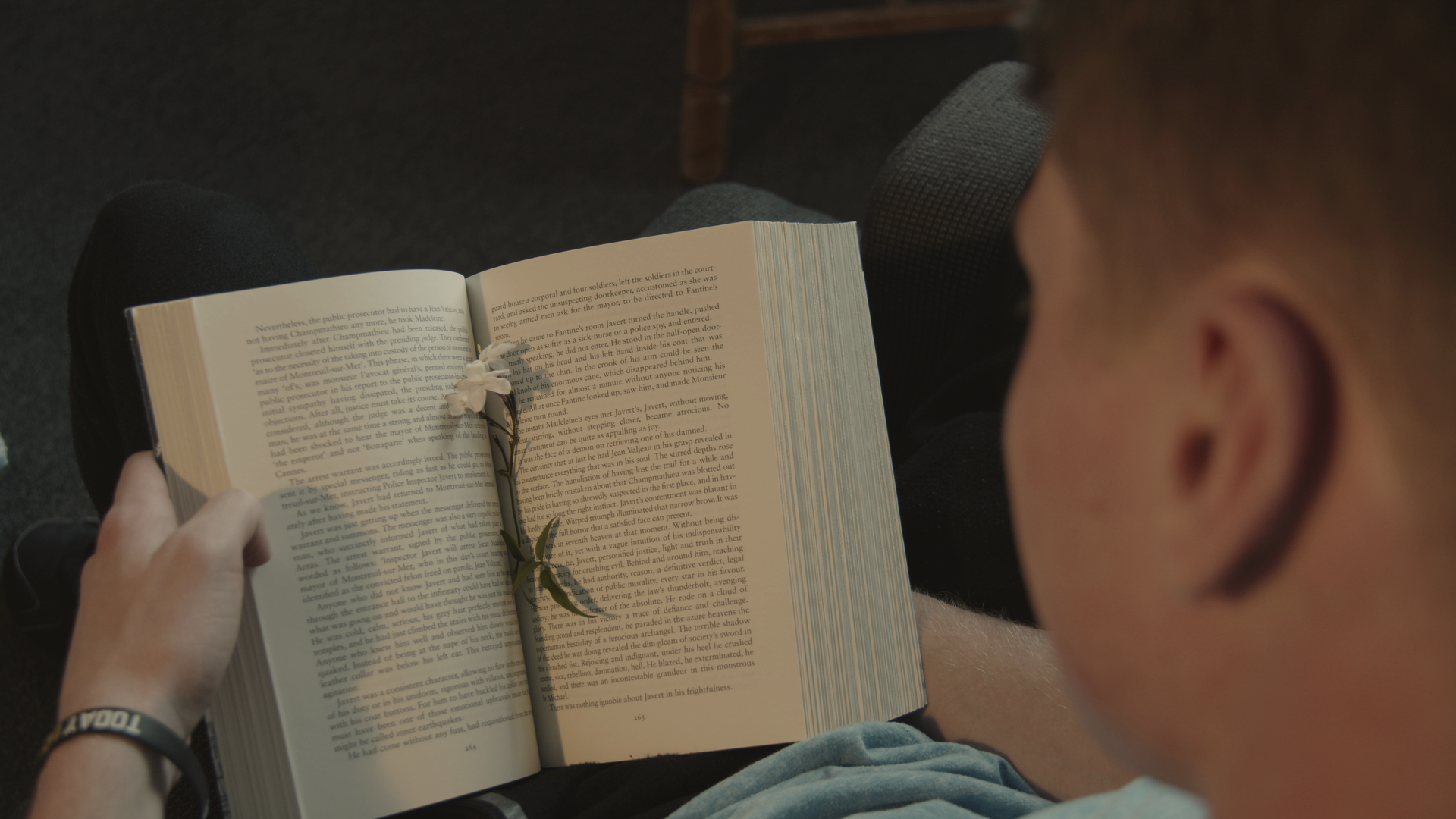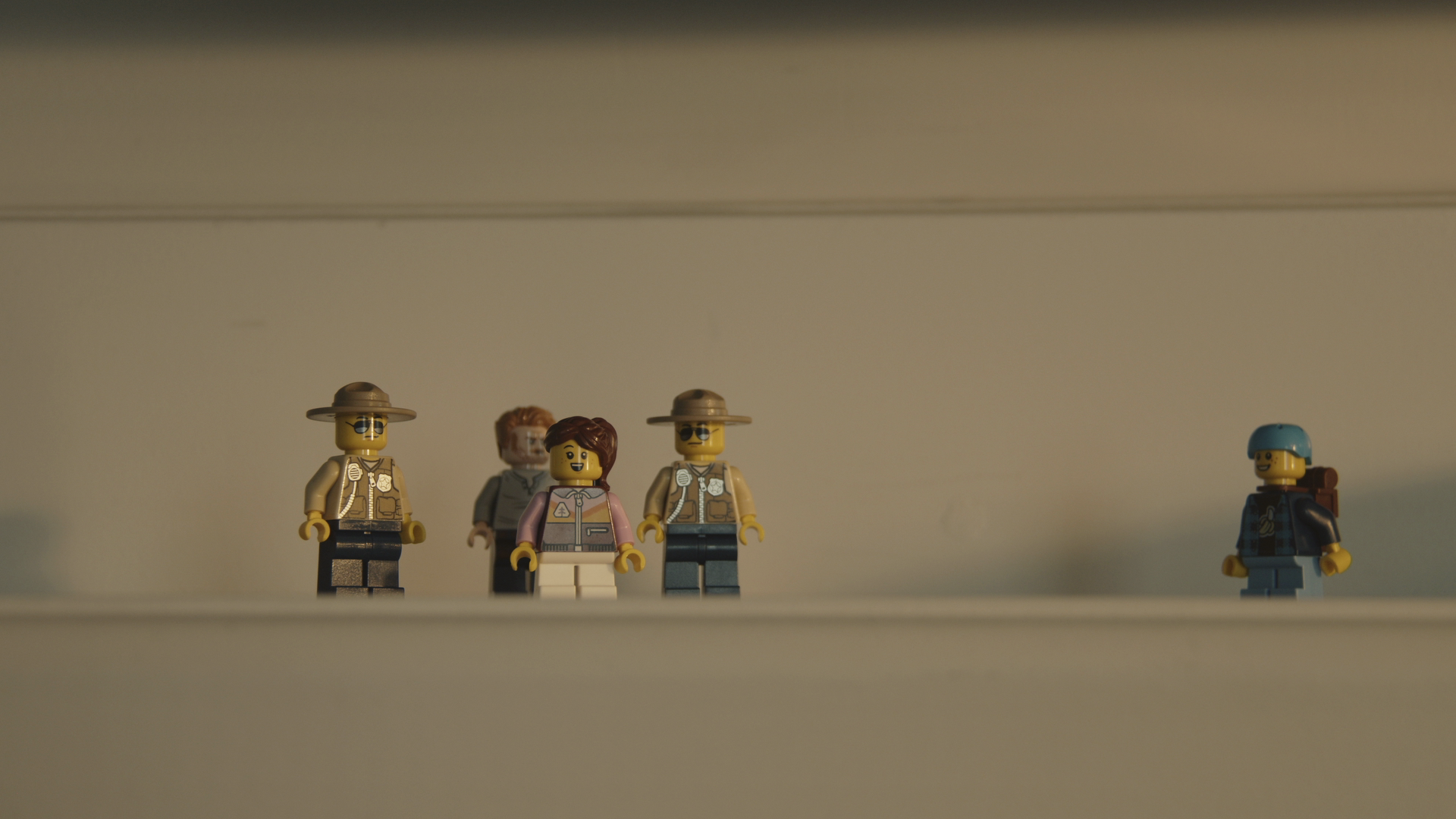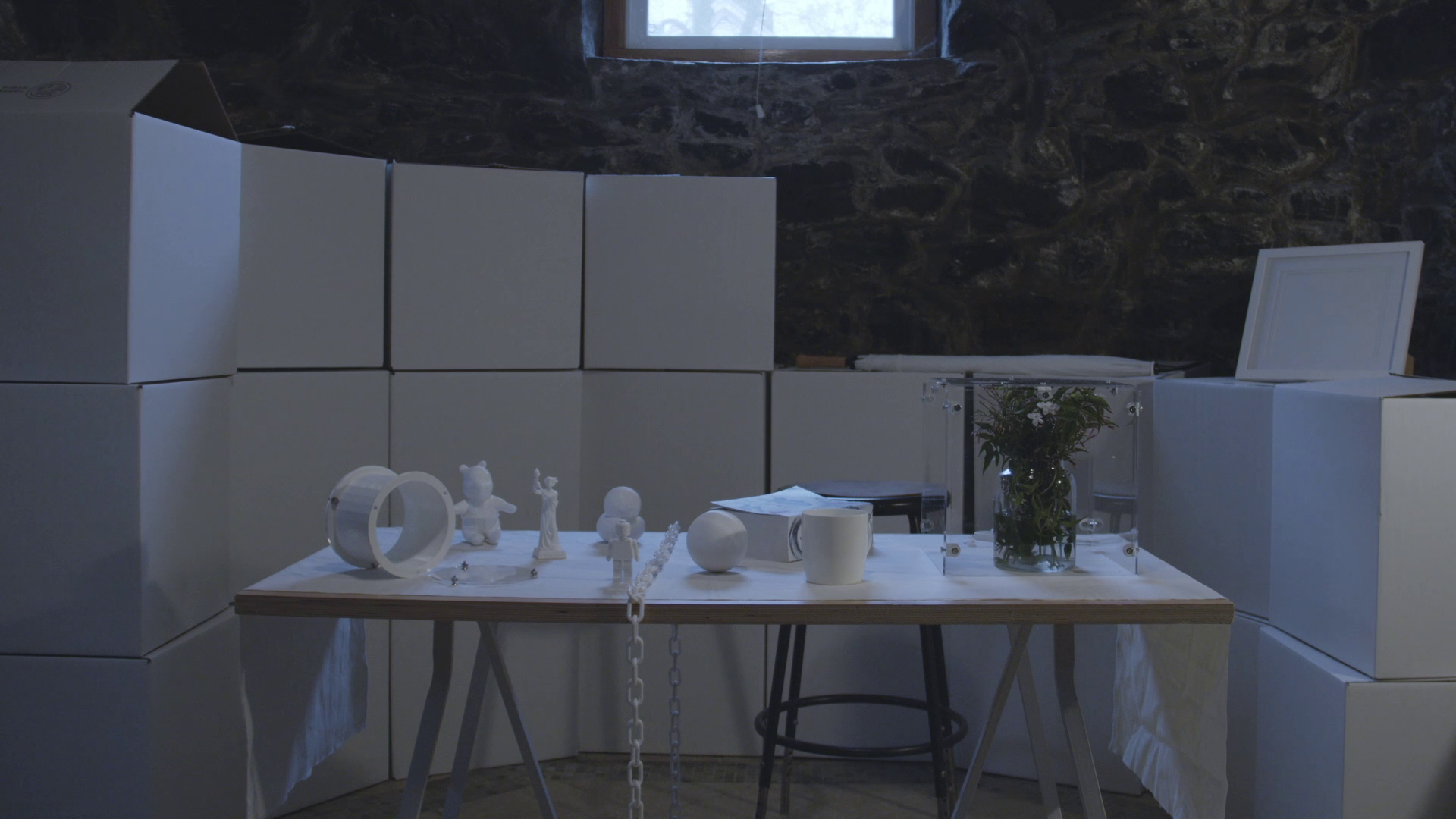The Bureau of Collective Memory: A Restoration of Things Lost in the Censored Mist
I. Prologue / The Objects-in-between
The world we inhabit is a wondrous tapestry of subjectivity and objectivity. It is a realm where humanity’s beliefs and creations, as well as the rapid advancement of mechanisation, have given birth to a new class of objects known as ‘quasi-objects’. This term, coined by the French philosopher Michel Serres, refers to objects that exist in a state of perpetual change, crafted through the delicate interplay between humans and the material world, all facilitated by the marvels of technology. These quasi-objects are not standalone entities, but rather emerge from the collective actions of humans, constantly evolving and reshaping the world around us. As we delve deeper into the creation of, and interaction with, these captivating quasi-objects, we are compelled to question our perceptions of what constitutes an object and our place in society.
Indeed, even objects as seemingly simple as tools, buildings, and machines can be considered quasi-objects, given that they are manmade interventions in the physical world. Likewise, networks of objects, such as ecological systems, which are products of natural processes that are being affected by human activities today, can also fall under the quasi-object category. Additionally, there are social systems, such as political institutions, cultural practices, and economic systems, which are entirely created through human interaction and constantly evolve in response to changing social conditions. Even language systems, as products of human communication, evolve over time as people interact with them. Thus, the concept of quasi-objects highlights the interconnectedness of the physical, social, and linguistic worlds we inhabit and challenges us to rethink our relationship with the objects and systems that shape our lives.
As humans continue to interact with objects, a curious phenomenon emerges ‒ the creation of quasi-objects that possess agency and wield significant influence over social and political processes. Examining these quasi-objects ‒ which can take the form of technologies like social media platforms, surveillance systems, and weapons ‒ provides critical insights into the complex relationships between people, objects, and politics. The implications of these quasi-objects are vast, as they impact the distribution and use of political power in ways both subtle and profound.
Take, for instance, the role of social media in shaping politics. While social media has opened up new avenues for political expression and activism, it has also enabled the spread of false information and propaganda. Similarly, the political infrastructure itself ‒ which includes quasi-objects like voting machines and ballot boxes ‒ can heavily influence election results and shape the allocation of political power.
But the influence of quasi-objects goes beyond their tangible impact on politics. They also serve as powerful symbols that inspire and unite individuals around shared causes. These symbols take many forms, from recognisable logos to tangible items like flags and banners. Consider the rainbow flag used to represent the LGBT+ community, the pink ‘Pussyhat’ worn during the Women’s March, and the raised fist used to represent the Black Lives Matter movement. By defying easy classification and traditional ways of thinking, these quasi-objects play a critical role in shaping the identities and beliefs of political movements and individuals alike. They create a sense of community among members of organizations and movements and garner support from individuals with similar values and beliefs.






II. Transition / The Shadow of Forgetting
Just as quasi-objects are shaped by collective use and acceptance, collective memory, constructed through storytelling, rituals, and commemorative events, forms a shared history that shapes a group’s identity, values, and beliefs.
What happens when those in power attempt to manipulate memory and suppress knowledge? In her novel set on an unnamed island, Japanese author Yoko Ogawa explores this question with striking clarity. The Memory Police systematically erase memories of certain objects and concepts, and Ogawa's work exposes the devastating consequences of such control. The novel touches on themes of memory, loss, identity, and power, and underscores the importance of remembering while warning against the dangers of forgetting. Ogawa's dystopian vision presents a chilling scenario in which certain memories are prohibited, and those who resist these prohibitions are punished by the Memory Police. The novel serves as a stark reminder of the state's ability to control information and shape collective memory, and the profound impact this has on individuals and society as a whole. By exposing the insidiousness of such control, Ogawa underscores the vital role memory and knowledge construction play in our lives, and the critical need to safeguard them from those who seek to suppress them.
As we consider these concepts, we must recognise that our understanding of knowledge and memory is not objective, but rather shaped by social processes and power dynamics. By acknowledging and confronting these forces, we can work towards a more equitable and just society where the dissemination of knowledge and memory is not controlled by a select few.
Censorship is a dangerous practice that can have far-reaching consequences for collective memory and our understanding of the world. By limiting or controlling the information that is available to the public, censorship can create a void in our consciousness that threatens to erode our ability to comprehend events, history, and culture.
In some countries, government censorship casts a dark shadow over the public’s ability to learn about crucial historical events or political perspectives. The result is a distorted, incomplete understanding of the world around us, where key moments in history are lost to the abyss of censorship.
Similarly, censorship in the media or on social media platforms can have a profound impact on our ability to stay informed about current events. When information is suppressed or manipulated, it becomes difficult for people to form well-informed opinions or to make fact-based decisions. The result is a society that is more susceptible to manipulation and propaganda, where truth is elusive.
The power of knowledge is a potent force, and censorship is a threat to its very existence. By limiting access to information and controlling the narrative, those in power can maintain their hold on society and shape public perception to their liking. We must be vigilant in our fight against censorship, for only by doing so can we ensure that our collective memory and understanding of the world remain whole and intact.
III. Set / Creative Resilience
When we are faced with censorship and political threats, the transformative power of art can be a beacon of hope. By using art as a means of subverting censorship and challenging oppressive systems, individuals and groups can fill the void left by censorship while also protecting themselves from harm.
Across history, artistic mediums such as film, literature, music, and visual arts have been used to push boundaries, amplify underrepresented voices, and ignite social movements. From the novels of James Baldwin to the revolutionary murals of Diego Rivera, art has been a powerful tool for confronting oppressive systems and imagining a more just world.
Art has a unique ability to connect with audiences on an emotional and visceral level, transcending language and cultural barriers. Through creative expression, individuals and communities can tell their stories, share their perspectives, and challenge dominant narratives that seek to silence them.
In the face of censorship, art can be a powerful means of resistance and a source of empowerment. Whether through graffiti, the spoken word, or digital media, artistic expression can be a way to assert one’s voice and claim agency in a world that seeks to silence dissent.
Among the diverse forms of artistic expression, film reigns supreme as a masterful medium that can transport us to distant worlds and alternate perspectives, stirring our senses and captivating our imaginations like no other storytelling form can. Its potential to challenge the censorship of quasi-objects and events is unparalleled, as it functions as a time capsule of cultural and historical moments, while reconstructing the gaps in our collective memory. With its unparalleled ability to capture images, sounds, and emotions, film creates a multi-dimensional experience that transcends time and space, leaving an indelible mark on our hearts and minds. It is a powerful tool for representing and documenting experiences that might otherwise be muted, forgotten, or ignored.
In addition, film plays a vital role as an archival assembly that preserves and disseminates historical and cultural knowledge. By capturing the sights, sounds, and emotions of the past, films provide an invaluable record of cultural and historical moments that can be accessed by future generations. Furthermore, film serves as a crucial instrument in reconstructing the voids in our collective memory by giving voice to underrepresented communities, allowing them to share their stories and experiences. By illuminating the significance of their contributions, film helps fill gaps in collective memory and fosters social justice.
When we are faced with censorship and political threats, the transformative power of art can be a beacon of hope. By using art as a means of subverting censorship and challenging oppressive systems, individuals and groups can fill the void left by censorship while also protecting themselves from harm.
Across history, artistic mediums such as film, literature, music, and visual arts have been used to push boundaries, amplify underrepresented voices, and ignite social movements. From the novels of James Baldwin to the revolutionary murals of Diego Rivera, art has been a powerful tool for confronting oppressive systems and imagining a more just world.
Art has a unique ability to connect with audiences on an emotional and visceral level, transcending language and cultural barriers. Through creative expression, individuals and communities can tell their stories, share their perspectives, and challenge dominant narratives that seek to silence them.
In the face of censorship, art can be a powerful means of resistance and a source of empowerment. Whether through graffiti, the spoken word, or digital media, artistic expression can be a way to assert one’s voice and claim agency in a world that seeks to silence dissent.
Among the diverse forms of artistic expression, film reigns supreme as a masterful medium that can transport us to distant worlds and alternate perspectives, stirring our senses and captivating our imaginations like no other storytelling form can. Its potential to challenge the censorship of quasi-objects and events is unparalleled, as it functions as a time capsule of cultural and historical moments, while reconstructing the gaps in our collective memory. With its unparalleled ability to capture images, sounds, and emotions, film creates a multi-dimensional experience that transcends time and space, leaving an indelible mark on our hearts and minds. It is a powerful tool for representing and documenting experiences that might otherwise be muted, forgotten, or ignored.
In addition, film plays a vital role as an archival assembly that preserves and disseminates historical and cultural knowledge. By capturing the sights, sounds, and emotions of the past, films provide an invaluable record of cultural and historical moments that can be accessed by future generations. Furthermore, film serves as a crucial instrument in reconstructing the voids in our collective memory by giving voice to underrepresented communities, allowing them to share their stories and experiences. By illuminating the significance of their contributions, film helps fill gaps in collective memory and fosters social justice.





IV. Plot / The Illusion of Reality
The year was 2022, and on a bridge in the heart of the city, a democratic symbol emerged, imbued with hope and promise for a better future. But even as its message of freedom and equality resonated with the people, the government moved quickly to suppress its power, prohibiting the sale of large fabrics and quashing any attempts at public expression.
Undeterred, tens of thousands of people took to the streets a month later to protest the infringement of their human rights brought on by pandemic measures. This time, they came armed with nothing but plain white paper, using their creativity and resourcefulness to convey their dissatisfaction with censorship.
The government, seeing this as a threat to their authority, sought to alter the meaning of the protests over time. But the people refused to back down, persisting in their pursuit of free expression and democratic principles.
Despite being underestimated and dismissed by those in power, symbols and quasi-objects remained a formidable force for change in the hands of those who refused to be silenced. When the people stand together in solidarity, there is nothing they cannot achieve.
In a country where censorship still reigns, people have discovered innovative ways to challenge it and to keep the spirit of protest alive. Recreating censored content can be a powerful form of resistance against those who seek to silence them. It allows individuals and communities to express themselves freely and share their perspectives, despite attempts to suppress them. Such acts of creativity can also serve as a means of preserving cultural heritage and promoting freedom of expression, particularly in contexts where censorship is used to control the narrative and restrict access to information.
One remarkable example of such creative resistance is the recreation of the iconic scene on the square in 1989, where a lone man stood in front of a line of tanks. In one recreation, a yellow rubber duck replaces the tanks. In another, the scene is reconstructed using Lego bricks and minifigures. These seemingly innocent childhood toys serve as playful yet powerful symbols, and a reminder of the unwavering determination of those who fight for democracy.
In recent times, pro-democratic movements have been surging across the country, awakening a nationwide wave of activism for the first time since the summer of 1989. The people have once again taken up the mantle of creative resistance, using their ingenuity and imagination to challenge censorship and fight for their rights.
As activism takes centre stage, objects – or, more aptly, quasi-objects – are being imbued with political power to fight back against censorship and human rights violations. But as objects gain political significance, they become increasingly vulnerable to censorship, which often seeks to stifle any offensive or objectionable political messages. Thus, the politicization of objects becomes inextricably linked with censorship, locked in a power struggle that ultimately determines who has the right to shape and control our collective narratives. The jasmine flower and its by-products carry significant cultural and national symbolism. A folk song celebrating the flower, dating back to the eighteenth century, was once used as a temporary national anthem by officials in Europe in 1896 and has since been played at several significant events. However, during the 2011 pro-democracy protests, the song and the flower became associated with the Jasmine Revolution and were censored online, with videos and searches being blocked. The National Jasmine Flower Festival was also postponed that year. Despite attempts at suppression, the jasmine flower and its related symbols continue to hold power and serve as a tool for political activism.
The year was 2022, and on a bridge in the heart of the city, a democratic symbol emerged, imbued with hope and promise for a better future. But even as its message of freedom and equality resonated with the people, the government moved quickly to suppress its power, prohibiting the sale of large fabrics and quashing any attempts at public expression.
Undeterred, tens of thousands of people took to the streets a month later to protest the infringement of their human rights brought on by pandemic measures. This time, they came armed with nothing but plain white paper, using their creativity and resourcefulness to convey their dissatisfaction with censorship.
The government, seeing this as a threat to their authority, sought to alter the meaning of the protests over time. But the people refused to back down, persisting in their pursuit of free expression and democratic principles.
Despite being underestimated and dismissed by those in power, symbols and quasi-objects remained a formidable force for change in the hands of those who refused to be silenced. When the people stand together in solidarity, there is nothing they cannot achieve.
In a country where censorship still reigns, people have discovered innovative ways to challenge it and to keep the spirit of protest alive. Recreating censored content can be a powerful form of resistance against those who seek to silence them. It allows individuals and communities to express themselves freely and share their perspectives, despite attempts to suppress them. Such acts of creativity can also serve as a means of preserving cultural heritage and promoting freedom of expression, particularly in contexts where censorship is used to control the narrative and restrict access to information.
One remarkable example of such creative resistance is the recreation of the iconic scene on the square in 1989, where a lone man stood in front of a line of tanks. In one recreation, a yellow rubber duck replaces the tanks. In another, the scene is reconstructed using Lego bricks and minifigures. These seemingly innocent childhood toys serve as playful yet powerful symbols, and a reminder of the unwavering determination of those who fight for democracy.
In recent times, pro-democratic movements have been surging across the country, awakening a nationwide wave of activism for the first time since the summer of 1989. The people have once again taken up the mantle of creative resistance, using their ingenuity and imagination to challenge censorship and fight for their rights.
As activism takes centre stage, objects – or, more aptly, quasi-objects – are being imbued with political power to fight back against censorship and human rights violations. But as objects gain political significance, they become increasingly vulnerable to censorship, which often seeks to stifle any offensive or objectionable political messages. Thus, the politicization of objects becomes inextricably linked with censorship, locked in a power struggle that ultimately determines who has the right to shape and control our collective narratives. The jasmine flower and its by-products carry significant cultural and national symbolism. A folk song celebrating the flower, dating back to the eighteenth century, was once used as a temporary national anthem by officials in Europe in 1896 and has since been played at several significant events. However, during the 2011 pro-democracy protests, the song and the flower became associated with the Jasmine Revolution and were censored online, with videos and searches being blocked. The National Jasmine Flower Festival was also postponed that year. Despite attempts at suppression, the jasmine flower and its related symbols continue to hold power and serve as a tool for political activism.
V. Act / A Not-So-Fictional Fictional Agency
‘The Last Jasmine Herein’ is a poignant short film that draws inspiration from the transformative events and objects that have shaped the landscape of activism in the country. The film’s narrative is built around the jasmine flower, a cultural emblem that has been steeped in political symbolism throughout history. The screenplay delves into the tumultuous journey of the country's activists, utilising a diverse range of props to symbolise their struggles and triumphs. These objects include toys, a tennis ball, a chain, an empty chair, plain papers, and a stuffed toy based on a beloved cartoon character. By piecing together the mesmerising story of the jasmine flower's rise and fall, the film seeks to create an everlasting virtual space that reflects upon the arduous activist experience and that will inspire forthcoming generations to persevere relentlessly in their pursuit of social justice.
Not only did the research shed light on the impact of government censorship on collective memory, but it also spurred the creation of a mobile installation that serves as a catalyst for archival practice. The installation draws inspiration from the concept of a time capsule, as it seeks to preserve, reconstruct, and disseminate sentimental moments that are at risk of being lost due to government censorship. Each of the collection's devices embodies the notion of the quasi-object - an entity in constant evolution. While the physical form of each capsule and the object it contains serves as a space and memory-catcher for the quasi-object at a specific point in time, the installation as a whole enables participants to recognize the metaphor of objectivity's evolution within the construct of collective memory before it is subjected to policing. Through this innovative approach to archiving, the installation highlights the importance of preserving and protecting the narratives and memories that shape our cultural identity.
The digital film and the physical time capsule are like two threads that weave their way through the pitch-black tunnel of censorship, carrying a glimmer of hope with them. While distinct in their form, the two threads share a common purpose: to preserve and protect precious cultural and historical moments from being lost to the mists of time. The digital film captures the sights and sounds of the present, while the time capsule acts as a portal to the past, safeguarding tangible objects that carry significant memories. Together, they form an unbreakable bond, defying attempts to suppress and erase important cultural and historical narratives. They are the keepers of our collective memory, shining a light on the past and present, and inspiring future generations to continue the fight for justice and freedom.
‘The Last Jasmine Herein’ is a poignant short film that draws inspiration from the transformative events and objects that have shaped the landscape of activism in the country. The film’s narrative is built around the jasmine flower, a cultural emblem that has been steeped in political symbolism throughout history. The screenplay delves into the tumultuous journey of the country's activists, utilising a diverse range of props to symbolise their struggles and triumphs. These objects include toys, a tennis ball, a chain, an empty chair, plain papers, and a stuffed toy based on a beloved cartoon character. By piecing together the mesmerising story of the jasmine flower's rise and fall, the film seeks to create an everlasting virtual space that reflects upon the arduous activist experience and that will inspire forthcoming generations to persevere relentlessly in their pursuit of social justice.
Not only did the research shed light on the impact of government censorship on collective memory, but it also spurred the creation of a mobile installation that serves as a catalyst for archival practice. The installation draws inspiration from the concept of a time capsule, as it seeks to preserve, reconstruct, and disseminate sentimental moments that are at risk of being lost due to government censorship. Each of the collection's devices embodies the notion of the quasi-object - an entity in constant evolution. While the physical form of each capsule and the object it contains serves as a space and memory-catcher for the quasi-object at a specific point in time, the installation as a whole enables participants to recognize the metaphor of objectivity's evolution within the construct of collective memory before it is subjected to policing. Through this innovative approach to archiving, the installation highlights the importance of preserving and protecting the narratives and memories that shape our cultural identity.
The digital film and the physical time capsule are like two threads that weave their way through the pitch-black tunnel of censorship, carrying a glimmer of hope with them. While distinct in their form, the two threads share a common purpose: to preserve and protect precious cultural and historical moments from being lost to the mists of time. The digital film captures the sights and sounds of the present, while the time capsule acts as a portal to the past, safeguarding tangible objects that carry significant memories. Together, they form an unbreakable bond, defying attempts to suppress and erase important cultural and historical narratives. They are the keepers of our collective memory, shining a light on the past and present, and inspiring future generations to continue the fight for justice and freedom.
